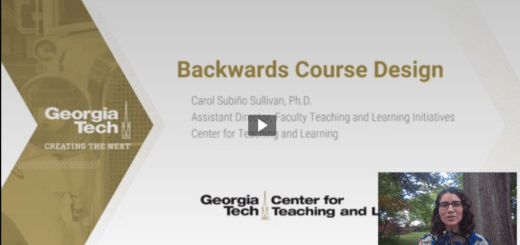Best Practices of Using ePortfolios for Students’ Learning
In our last blog post, we discussed the benefits of using ePortfolio to support student learning. When building their ePortfolios, students would collect multiple projects and artifacts and then make connections among them. ePortfolios work the best when they are implemented program-wide or institution-wide. But they can still be at a smaller scope, such as for capstone projects, multi-semester classes, cross-discipline classes. Below are some best practices to implement ePortfolios.
Explain the benefits of ePortfolios to students
 ePortfolios can help students achieve a deeper understanding of the subject area and reflect on their learning journey. Students can use it as the online presence of their academic and career achievements. ePortfolios can also help students connect with other people and be a great tool to highlight their skillsets, abilities, and potentials for job searching and graduate program applications.
ePortfolios can help students achieve a deeper understanding of the subject area and reflect on their learning journey. Students can use it as the online presence of their academic and career achievements. ePortfolios can also help students connect with other people and be a great tool to highlight their skillsets, abilities, and potentials for job searching and graduate program applications.
Establish clear expectations
 Like all other assignments, you will need to explain what you expect from the students for their ePortfolios. How many artifacts should students include in their ePortfolios? In what format? Do you expect them to write reflective paragraphs for each artifact or just one reflection piece for the entire portfolio? If they need to write reflective paragraphs, how long should they be? How should they make connections between various parts of artifacts and experiences?
Like all other assignments, you will need to explain what you expect from the students for their ePortfolios. How many artifacts should students include in their ePortfolios? In what format? Do you expect them to write reflective paragraphs for each artifact or just one reflection piece for the entire portfolio? If they need to write reflective paragraphs, how long should they be? How should they make connections between various parts of artifacts and experiences?
Select the right ePortfolio platform
 There are many platforms to build student ePortfolios, including a few available at Georgia Tech, and this article will introduce later. Each platform has its features and may be suitable for different ePortfolio needs. For example, some are good for showing teamwork; some are good for highlighting computer programming skills and data analysis abilities; some are designed to present artistic works, such as graphics, photos, audios, videos, and animations. The instructor needs to analyze the nature of the ePortfolio and find the “right” platform.
There are many platforms to build student ePortfolios, including a few available at Georgia Tech, and this article will introduce later. Each platform has its features and may be suitable for different ePortfolio needs. For example, some are good for showing teamwork; some are good for highlighting computer programming skills and data analysis abilities; some are designed to present artistic works, such as graphics, photos, audios, videos, and animations. The instructor needs to analyze the nature of the ePortfolio and find the “right” platform.
Review the ePortfolio platform and existing ePortfolio examples with your students
 Walking through the processes of adding artifacts and other features of the ePortfolio platform can reduce the time, and energy students spend on figuring on the technology. Besides, showing students examples of other students’ ePortfolios will help them find their ePortfolio strategies, such as design, organization, design, and connections.
Walking through the processes of adding artifacts and other features of the ePortfolio platform can reduce the time, and energy students spend on figuring on the technology. Besides, showing students examples of other students’ ePortfolios will help them find their ePortfolio strategies, such as design, organization, design, and connections.
Build your own ePortfolio
 The best way to teach is to use your own experiences as an example. Building your own ePortfolio will prove to the students the benefits of doing it. You will also better understand the process, challenges, and advantages, which helps you lay out the instruction and assessment for the ePortfolio assignment.
The best way to teach is to use your own experiences as an example. Building your own ePortfolio will prove to the students the benefits of doing it. You will also better understand the process, challenges, and advantages, which helps you lay out the instruction and assessment for the ePortfolio assignment.
Tie ePortfolios to assessment
 Building an ePortfolio can be very time-consuming. Therefore, it should be tied to the final grade and should take a significant portion. Also, the standards to assess the ePortfolios should be clear and concrete. We strongly recommend using a rubric to assess ePortfolios. Here are some excellent examples of rubrics for evaluating ePortfolios:
Building an ePortfolio can be very time-consuming. Therefore, it should be tied to the final grade and should take a significant portion. Also, the standards to assess the ePortfolios should be clear and concrete. We strongly recommend using a rubric to assess ePortfolios. Here are some excellent examples of rubrics for evaluating ePortfolios:
ePortfolio rubric developed by the University of Wisconsin
Make it social
 As a tool that supports students learning via social constructivism, an important aspect of ePortfolios is sharing with others, making connections, and receiving feedback. You could have a page in Canvas including links to all students’ ePortfolios. You could then add a discussion forum to make it easy for students to comment on each other’s ePortfolios. Some ePortfolio platforms also allow students to “connect” with others within the same platform and export their ePortfolios to other social network websites (i.e., LinkedIn), such as the Portfolium platform we are going to talk about next.
As a tool that supports students learning via social constructivism, an important aspect of ePortfolios is sharing with others, making connections, and receiving feedback. You could have a page in Canvas including links to all students’ ePortfolios. You could then add a discussion forum to make it easy for students to comment on each other’s ePortfolios. Some ePortfolio platforms also allow students to “connect” with others within the same platform and export their ePortfolios to other social network websites (i.e., LinkedIn), such as the Portfolium platform we are going to talk about next.
Contact Us
In the next blog post about ePortfolios, we will discuss a few tools and platforms for Georgia Tech students to build ePortfolios. If you are an instructor and have successfully used ePortfolio for your project, we would love to hear from you. Send an email to rui.hu@gatech.edu, and we might be able to feature your innovative usage in a future post.
Acknowledgment:
This blog post is derived from the work of the Centre for Teaching Excellence, University of Waterloo, by the Center for Teaching and Learning at the Georgia Institute of Technology.





